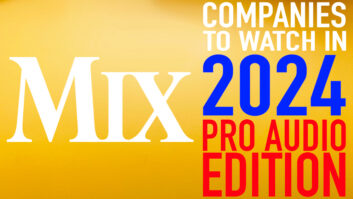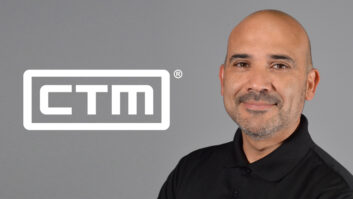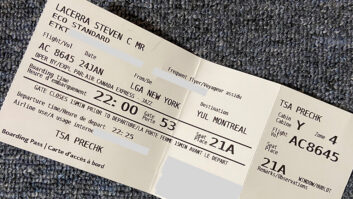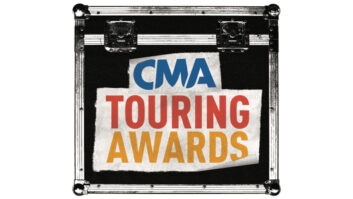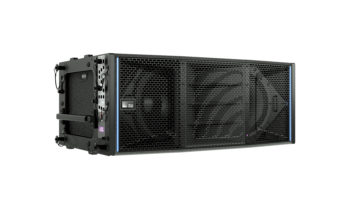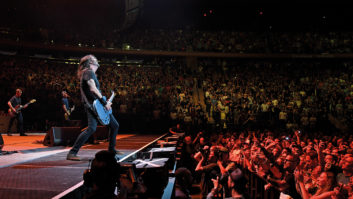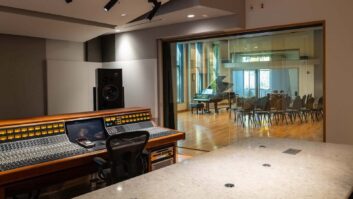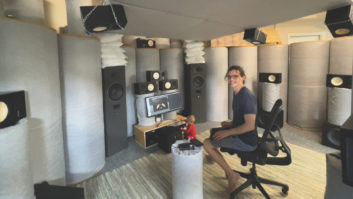Bad Company hit the road this summer; ensuring coverage at every stop on the shed tour was a sizable JBL VTX line array system provided by Thunder Audio (Livonia, MI). BETHEL WOODS, NY—Long before that TV talent show borrowed the name, Paul Rodgers was dubbed “The Voice,” and it’s an appropriate nickname. As the frontman for Free, Rodgers made his mark, but it was his stretch with Bad Company in the Seventies, knocking out six platinum albums and a string of hits like “Rock and Roll Fantasy,” “Feel Like Making Love,” “Can’t Get Enough,” “Shooting Star” and the band’s eponymous single, that made the group a cornerstone of Classic Rock.

That cornerstone was on full display this past summer when Bad Company hit the road with fellow rock stalwarts Lynyrd Skynyrd for a 13-date co-headlining tour. Founding members Rodgers, guitarist Mick Ralphs and drummer Simon Kirke were joined by modern-day additions guitarist Howard Leese and bassist Todd Ronning, original bassist Boz Burrell having passed away in 2006. Along for each step of the journey was Thunder Audio (Livonia, MI), which provided FOH and monitor gear for Bad Company and a sizable JBL VTX line array system that was used by both groups; Lynyrd Skynyrd carried audio production from Special Event Services (Winston-Salem, NC)
After Bad Company broke up in the early 1980s, Rodgers went on to front supergroup The Firm, and more recently Queen, but in 2010, he, Ralphs and Kirke reconvened and soon Bad Company was back in business. The band’s been on the road on and off ever since, according to tour manager Chris Fox. “Mick, Paul and Simon did a reunion show a few years ago, and then they wanted to do a full tour,” he said, speaking backstage at the Bethel Woods Center for the Arts, a modern shed venue built on the site of the 1969 Woodstock Festival. “I was pretty fortunate because I was hired to do that reunion and I’ve been with them ever since.”
And that, indirectly, was how Thunder Audio came to team up with Bad Company. “Back in 1996, I was tour managing Days of the New and they did a tour opening for Metallica—whose monitor engineer was Paul Owen,” said Fox. “We met and afterwards, I followed what Paul was doing after I left the tour. I hadn’t seen him in a while and next thing I know, he had gotten involved with Thunder Audio.”
Fast-forward to 2012, and times had changed—Fox had variously worked as a FOH engineer, tour manager/accountant or production manager for acts like The Strokes, Weird Al Yankovic and Mr. Big, while Owen had left the road to be named vice president of Thunder Audio. The two caught up, however, when Fox became the tour coordinator for Dolly Parton, a longtime Thunder client. “Working with Dolly, I got to see how Thunder was top-notch,” said Fox. “The gear was great—never had any difficulty with it—and I loved the working relationship that I have with Tony [Villarreal, owner], Paul and everyone at the shop. It was a really easy match, so when this tour went out, it was an opportunity to bring them into the family.”
The unlikely Dolly/Bad Company connection was then furthered by the addition of FOH engineer Mike Fechner, who Fox met on the country chanteuse’s tour. “The two tours are apples and oranges,” said Fechner. “A good 50 percent of Dolly’s show is her talking with the audience, so that’s a case where making sure you hear every word is as just important as the music, whereas with Bad Company, they’re pretty focused on one thing: Rock ‘n’ Roll. Both acts are entertaining, but they each get there in their own way.”
In Good Company: (l-r) Dustyn Peiffer, stage tech; Tim Dressler, monitor engineer; Mike Fechner, FOH engineer; and Sean Henry, system engineer. Missing: Josh Schmitz, PA tech In keeping with the traditional Classic Rock vibe, Fechner had a FOH mix position to match. Centered around a Midas Heritage 3000 console, the set-up included a few choice items from his studio: “Some of the classic pieces I brought along include a vintage SSL G384fx bus compressor, Smart Research C2 and several Distressors, all put to use in just the right locations.”

Still, it’s a digital world these days and modern gear could be found at the house mix position, though it appeared in the form of recording equipment. A JoeCo Black- Box recorder captured every show for the band’s archives and possible future use. “I use three Audio-Technica AT8035 shotguns in a L-C-R configuration along the front edge of the stage for audience capture,” Fechner explained. “At FOH, I also have a pair of Equation F20 condensers in a L-R rear configuration, as well as an AT8022 stereo mic, for the general capture of the amphitheaters. They’re all preamped directly through the Midas Heritage console and fed to seven of the 48 JoeCo BlackBox tracks, which allows for a nice 5.1 mix do be done at my facility in Nashville if needed.”
A second archiving arrangement was also on-hand, as Disc Live Network produced and sold instant live CDs of each show at the band’s merch table. “I’m doing a whole submix for the recording,” said Fechner, “going through a TC Electronic Finalizer to a few TASCAM CD burners. They take the CDs, dupe them and boom: You get a great live recording—no fixes, no tuning, no tweaks. Before, they had a guy backstage recording, but I said, ‘Look, I have this desk, and it can do many things at the same time. Let me pre-dial some stuff and I’ll make a couple of compromises in the house mix. We have all these audience mics—blend them in, and there you go.’
If instant CDs put the band’s performance under a microscope, so did the clarity of the PA, as the tour marked one of Thunder Audio’s first deployments of its new JBL VTX line array system, powered by Crown I-Tech 12000 HD amplifiers. The system featured two left and right main towers with 14 V25 loudspeakers each, along with two out-hangs of eight V25s each, eight ground-stacked S28 subs per side and 22 Crown I-Tech 12000 HD amps powering each side. In addition, the system was managed by system engineer Sean Henry via JBL HiQnet Performance Manager software. “The system is great,” he reported. “The VTX boxes go up quickly, they sound good, and we have plenty of headroom.” Fox concurred, noting, “I think the VTX PA represents both bands very well, and everything runs smooth.”
Keeping things running smoothly was no small matter, given that there were two headlining acts that each played 80 minutes a night, plus a 30-minute set by opening band Black Stone Cherry (which was mixed on a Behringer x32 compact digital mixer at FOH). If the system was trouble-free, that was just one less factor to deal with. Fox explained, “Both these crews and bands get along so well, work so well. When you see all the stuff we have on stage, you go ‘How the hell do they do this?’, but our crews just mesh. Changeovers happen without incident—20 minutes and they’re ready.
“It’s been a great reaction to these bands together,” he added. “The ticket sales have been phenomenal. This started out as three shows on the west coast with Lynyrd Skynyrd. We went off on our own for a few weeks, but we met up again in Dallas and have been rolling up until tonight, which is the last night of the tour. It’s sad, because it’s gone really well, so hopefully this thing will come out next year, too.”
Thunder Audio
Thunderaudioinc.com
JBL Professional
Jblpro.com
VITALstats
Bad Company
Thunder Audio, Inc. (Livonia, MI)
FOH Engineer:
Mike Fechner
Monitor Engineer:
Tim Dressler
Systems Engineer:
Sean Henry
Stage Tech:
Dustyn Peiffer
PA Tech:
Josh Schmitz
FOH Console:
Midas Heritage 3000
House Speakers:
JBL VTX V25, S28 subs
House Amplifiers:
Crown I-Tech 12000 HD
FOH Equipment/Plug- Ins:
SSL G384fx; Smart Research C2; Empirical Labs Distressors; Klark-Teknik DN370 EQ; Drawmer; TC Electronic Finalizer; Lexicon PCM91; Yamaha SPX990; TASCAM CDR burners
